April Davila's Blog, page 17
March 9, 2022
Writing Young Love
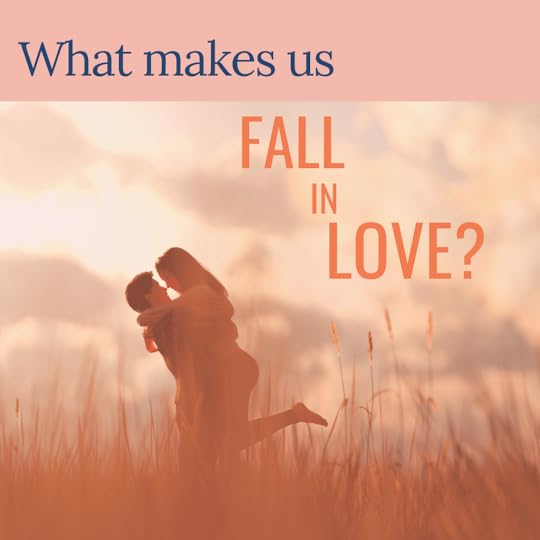

Let’s talk about young love. No seriously, I need your help. I’m trying to write the opening of a book that absolutely depends on two young people falling madly in love before they are separated around page 30. If their love isn’t a burn-down-the-house-and-everyone-in-it, stab-myself-in-the-heart-because-you-drank-all-the-poison kind of love, the separation isn’t so crushing and the story isn’t as compelling as it could be. Problem is: I’ve been in love with the same man for over 20 years.
Normally, I don’t count that as a problem. In fact, I consider myself pretty effing lucky, but it has made writing young, impulsive, irrational love a little challenging. And it’s not that we didn’t have that young, impulsive and irrational thing back in the day, but since then I’ve learned how love changes as you share it with someone for decades and I’m not really trusting myself to remember the all the details of how we started out.
Mining My Own HistoryAs a starting point, I pulled an old journal off the shelf. I’ve been journaling off and on for most of my life, but it only became a daily practice in 2015. So the entries are a little sporadic, but there is some good material there. There’s an entry on July 12, 2001 that starts:
I met a boy… 26, greying at the temples, smart, funny, gorgeous…
After that there’s a lot of hedging. He was just getting out of a long relationship (so was I)… “who knows where this is going…” Blah Blah Blah. Jump to August 29 of the same year:
F**k it, I’m crazy about him. And it scares the pants off me. It’s like falling, and it’s fun. In fact it’s wonderful.
So there’s some material to work with.
Best Selling RomancesI’v also been re-reading the first chapters of a few of my favorite romance novels (most of which are written by Tessa Dare – so delicious), but a lot of those stories, or at least the ones I seem to be drawn to, are the ones where the young woman and her soon-to-be lover start off opposed on some key point.
They can’t stand each other, but then circumstance pulls them together and they realize they’re meant to be together. Great reads, but it’s not quite what I’m aiming at. The main issue is I don’t have time to do the whole enemies-to-friends thing. I’m shooting for love at first sight.
When I shared my dilemma at a recent Very Important Meeting, someone suggested reviewing Romeo and Juliet. Kinda can’t believe I hadn’t thought of that.
Romeo and JulietWhat makes the story of Romeo and Juliet so compelling? Is it that their families are at war with each other? That’s what give the narrative such great conflict, but is that what makes them fall in love? You can see the distinction I’m trying to tease out here. What makes two people fall in love? Are they both just THAT gorgeous? Romeo says:
O, she doth teach the torches to burn bright!
It seems she hangs upon the cheek of night
Like a rich jewel in an Ethiope’s ear;
Beauty too rich for use, for earth too dear!
So shows a snowy dove trooping with crows,
As yonder lady o’er her fellows shows.
The measure done, I’ll watch her place of stand,
And, touching hers, make blessed my rude hand.
Did my heart love till now? forswear it, sight!
For I ne’er saw true beauty till this night.
Maybe she was just that gorgeous. That feels insipid. Frankly, it’s not their love that makes this story a classic, it’s their death.
A Modern Take on LoveThis article in Psychology Today says there are 11 reasons we fall in love:
SimilarityPropinquityDesirable characteristicsReciprocal likingSocial influenceFilling needsArousal/unusualnessSpecific cuesReadinessIsolationMysteryThis I can work with. It’s clinical, yes, but I can envision a scene where social influence nudges two characters together. Likewise for propinquity. My characters have actually known each other all their lives, they just don’t fall in love until circumstance pushes them together. I guess they are filling a need for each other. Yes, this list is much more helpful.
It would seem that the challenge is to understand the underlying needs of the characters and then have them act on those needs in the way of impulsive, myopic, and naive teenagers. Writing is hard.
Help a Writer OutI would love to hear some book recommendations for stories where two young people who have known each other peripherally all their lives click and fall in love. Or maybe you have your own story you could share? What made you fall in love (young or not)? Was it something s/he did or said, or was it just pheromones?
February 23, 2022
Starting With Characters


Last week I finished a draft of my second novel (insert victory dance here). I’m feeling pretty good about it, but if you follow along, you know that the next step in my process is to do nothing. Yep. I print it out and stick it in a drawer for about a month. I need this time away to forget all the edits and all the good intentions so that I can read it with fresh eyes. I’ve heard some writers say they leave it for even longer, but I’m way too impatient for that. I can hardly stand to give it a month and I can only manage that by distracting myself with a shiny new story idea.
The New IdeaThis week I opened a new Scrivener file and started working on an outline. It’s an historical novel, set in San Francisco around the gold rush. I’m a huge nerd for California history and I did a ton of research for novel two, but then the story kind of went its own way and I only got to include some of the things I found so interesting. Well this new idea is set square in the heart of San Francisco, starting (I think) with the day Brannon ran through town yelling “gold!”
I wrote my first book without an outline and it took eight years. Then, I outlined the hell out of the second novel and I wrote it in two years, so I’m going the outline route again with this one and I’m doing something I’ve never done before. I’m starting with characters.
Starting With CharactersIn my Scrivener binder’s character section I added the young woman I suspect is my main character. Then, I figured, she had a family, so I named each of them and decided out how old they were in 1848. Then I started thinking about the people they probably interacted with a daily basis. I did a little research and found this awesome list of reported occupations for the white men living in San Francisco at the time:
1 minister; 3 doctors; 3 lawyers; 2 surveyors; 1 school-teacher; 11 agriculturalists; 7 bakers; 6 blacksmiths; 1 brewer; 6 brick-makers; 7 butchers; 2 cabinet-makers; 26 carpenters; 1 cigar-maker; 13 clerks; 3 coopers; 1 gardener; 5 grocers; 2 gunsmiths; 3 hotel-keepers; 20 laborers; 4 masons; 11 merchants; 1 miner; 1 morocco-case maker; 6 inland navigators; 1 ocean navigator; 1 painter; 6 printers; 1 saddler; 4 shoemakers; 1 silversmith; 4 tailors; 2 tanners; 1 watchmaker; 1 weaver
Granted, this is just the white men (because they were the ones doing the counting), but I can hardly look at it without seeing a story evolve. I mean, in a town of 500 people there are 26 carpenters. That’s one in 20. There was a lot of building happening. And only 1 school teacher. What’s his story? Because it was almost certainly a he. And 3 lawyers. A town of 500 people needed 3 lawyers? And 6 printers working (I discovered) on the town’s 2 newspapers.
And BackstoryThen I found this list (again, counting just the white men):
Born in the United States 228 (note: California wasn’t a state yet in 1848) ; in California, 38; other Mexican departments, 2; Canada, 5; Chile, 2; England, 22; France 3; Germany, 27; Ireland, 14; Scotland, 14; Switzerland, 6; at sea, 4; Denmark, Malta, New Holland, New Zealand Peru, Poland, Russia, Sandwich Islands, Sweden and West Indies, one each.
Four of the men reported their place of birth as “at sea” (sideways glance… run from the law much?)
Anyway, I’ve used these two lists to start building my cast of characters. I named the guy from Denmark, gave him 27 years of age and made him the school teacher. I think the Canadians travel in a kind of gang of carpenters. You know how those Canadians can be. Maybe there’s a rivalry with the Germans? Still working on it.
To Find The StoryI have no idea what the overall arc of my story will be yet. I’m just having fun envisioning this place and all the people in it. Of course, all this is just a starting point. Gotta dig a little deeper than the old white guys, miright? Like this guy William Ledsesdorff, owner of the first steamship to sail on San Francisco Bay. I’ll have to fictionalize him, because fiction, but I’ll definitely be writing him into the story. And native people made up about 15% of the population (again, by the tally of the white guys).
And within six months of the start of my story, people from all over the world will start flooding in by the thousands. Things are gunna get crazy.
Ultimately, who knows if anything will come of all this. I’ve definitely spent time researching novels that I eventually lost interest in, but at this point it’s doing what I need it to do: get my mind off novel two for a month so I can come back to it in March for a fresh read.
I love my work. I feel like a kid when I play with ideas all day. It’s the best.
February 9, 2022
Create an Audio Recording of Your Manuscript for Better Editing


I recently finished a draft of my second novel. I printed it out, and now it’s sitting on my desk just waiting… for what? I’m feeling a little paralyzed. I know it probably needs more work, but I’m not sure what to do. Thankfully, this blog has become a pretty detailed log of the steps I took with my first book, so I scrolled back and found this article on creating an audio recording of the manuscript (strictly for editing purposes). Four years after writing it, I found it really helpful (thanks me from 2018!). I hope it can be of use to you too.
In November, while at a writing retreat at the Dorland Mountain Arts Colony, I took a day to record myself reading my manuscript out loud. It was an idea I got after listening to Lindsey Lee Johnson talk about writing her debut novel The Most Dangerous Place on Earth. (Yet another reason to go see writers talk about their work in person.)
She mentioned, just off hand, how she had recorded herself reading the manuscript when she thought it was done and ready, and then played it back to take it in aurally. She said that she noticed things in it that she hadn’t before, when she listened to it like that. So I decided to give it a try.
Here’s what I learned.
How to Make an Audio Recording of Your Manuscript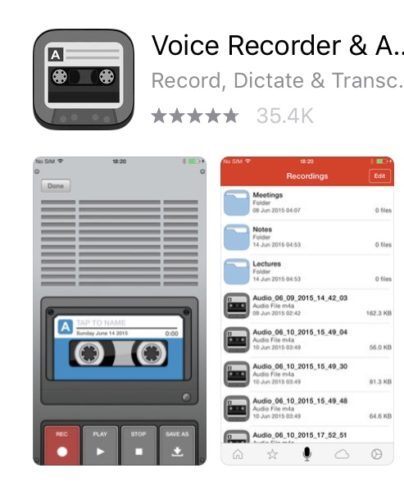
I did a little research on good recording apps and settled on VoiceRecorder. I didn’t need any bells and whistles, just a good, reliable recording device that would allow me to easily back up my files.
I made one recording for each chapter and saved the file as that chapter name (see the image below with the heading “Recordings”). When I got to chapter 10, the app wanted to list it after Chap 1, which kind of messed up my system, so I had to name chapter 10 “Chap 910,” and chapter 11 was “Chap 911.” It’s a little wonky, but I found that when the time came to play it back, things went much smoother. In fact, the app doesn’t so much as click as it transitions between chapters, so when I had everything in order and hit play, it was super easy to listen through.
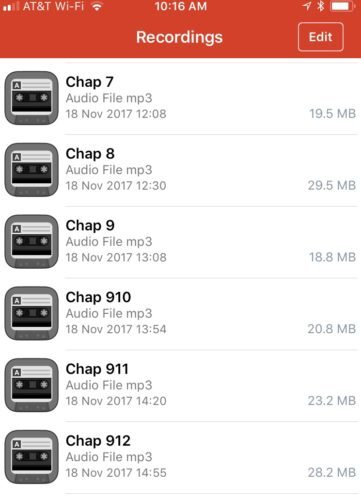
As for the actual reading, I debated whether to print out my draft, but settled on reading it from the screen. It turned out to be a good choice because I could fix little typos as I came across them, which saved me the hassle of having to go back over a paper draft to make quick and easy edits.
Because I was reading from the screen, I kept my notebook open beside my laptop for bigger notes. I tracked thoughts and ideas as they came to me, organizing them by chapter. When an idea hit (say I realized a continuity issue, or noticed an opportunity to add a detail), I would just hit pause on the app and scribble in my notebook. The app can hold the pause as long as you need, and in the playback it is completely silent. Good for bathroom breaks too.
One thing I learned a little too slowly was that I didn’t need to read loudly. I started as if I were reading to a crowd, nice and clear and strong, and by chapter three my throat was killing me. The mic is super sensitive. You can use a soft, quiet voice and it will pick it up just fine. And I highly recommend having some throat numbing cough drops handy. And tea. Lots of tea. It took me about nine hours to read it through. In hindsight, it might have been better to break this into two days.
When I was done, I backed up the files to my Google Drive, but you can also email them to yourself or upload them to DropBox. Your choice, but backing up just seems the wise thing to do.
Make The Most of Your PlaybackI recorded myself reading my manuscript on the last day of my writing retreat. Then I came home to Thanksgiving week and the kids were off school, so I took a week away from it. When it was time to jump back in, I wasn’t sure how best to go about it. I didn’t want to read along, because the whole point was to take in the story as an audio book, but I didn’t want to listen to it while I was walking the dog, because I knew I would want to make notes.
I settled on sitting at my desk. I kept my notebook on my right, and had the manuscript open to the chapter I was listening to, but to keep myself from reading along, I used a coloring book. Yep. I colored.
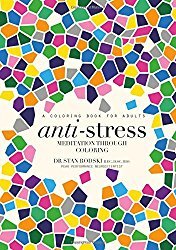
The kids got me this coloring book for my birthday last year and frankly I hadn’t touched it. I mean, who has time to color? But it was perfect for keeping my hands busy while I listened to my story. And I actually love the pages I worked on. Coloring is fun. I had completely forgotten.
Anyway, I let the recording play through, pausing to make notes as they occurred to me. I broke the task into two days of work.
When I was done, I had three pages of notes to address. Partly, that was a list of words that I felt I used too much (felt, seemed), but mostly it was specific story notes, anywhere from three to nine notes per chapter. Some were simple and others required a little more thinking, but there was nothing dramatic. I finally have a story I’m happy with.
I took the first half of December to make all those edits, then sent the final draft off to a copy editor, because seriously, I can read a typo like fifteen times and not see it. She sent the draft back to me this Monday, so now I’m going through and making final final edits.
And then out it goes… Yikes.
So that’s how I created an audio recording of my manuscript. I will probably never listen to it again, but it was very useful when I needed it.
I’m a big believer in the idea that it’s the little things that make a big difference. These tedious final steps, the ones I’ve been so sorely tempted to skip over, have brought my novel to a place where I feel really good about it. From here, I guess only time will tell.
January 27, 2022
Elusive Writing Routines


The topic of routines has come up a lot recently during our post-writing discussions at A Very Important Meeting. We all know that writing routines can help us be more consistent with getting words on the page, but often it seems like, as soon as we’ve settled into a groove, the circumstances of our lives change and everything gets upended.
Good Old RoutinesThe benefit to any routine, and writing routines in particular, is that they eliminate the need for decisions.
Decisions are exhausting: What shoes should I wear today? What to have for breakfast? Whether to scroll through social media for a few more minutes or get to work? We make so many decisions in a day that we don’t even realize we’re making them and every one requires some degree of contemplation, using mental energy that I simply don’t have to spare. Which is why I love my routines.
I get up, I pour a cup of coffee, I sit at my desk and write a page or two in my journal, then I meditate for 15 minutes or so before getting to my writing. That’s my routine. Unless the dogs need walking, or I’m not feeling well, or my daughter needs a ride to school, or my dear neighbor friend invites me a for a morning walk, or…
DisruptionRoutines are so easily disrupted. Life is always shifting, making the things we want and need to do feel like Tetris pieces that we’re constantly scrambling to fit together.
When I find myself feeling overwhelmed, I remember a line from an essay by David Mitchell titled “Neglect Everything Else” (published in Light the Dark: Writers on Creativity, Inspiration, and the Artistic Process). He says:
You’ve only got time to be a halfway decent parent, plus one other thing. For me, that one other thing is: I’ve got to be writing.
This resonates with me, as I only began my writing journey after having kids and being a halfway decent parent will always be my top priority. Also like Mitchell, my one other thing is writing.
I’ve Got To Be WritingWhen my routines fall apart, I hold onto writing as the one big thing that everything else has to fit in around. I block it out first on my calendar (after soccer games and little league) and then try to find time for everything else.
Often this means my old routines degrade into shambles. I do non-writing things all out of order, or haphazardly throughout the day, or not at all, but I make sure I always write and slowly, new patterns emerge. I try to notice when they do and embrace the new rhythm, solidify it as my new routine. This process takes weeks and then, once I’m good and settled in, life throws another curve ball and the routines fall apart all over again.
But there’s a certain peace in knowing that nothing is permanent. It forces me to prioritize and always keep my writing at the top of the list (right below my family). I roll with the punches and try not to be too hard on myself when everything falls apart. Because it will. Time and again it will.
Through it all, I just keep writing.
January 13, 2022
The 6-Week Mindful Writers Challenge

After ten years of struggling to see my stories published while going around and around with the revisions of my novel, something changed. I finished the novel. I found an agent. I signed my first publishing deal. I was accepted to attend the Squaw Valley Community of Writers (after having been rejected two years before). A short story I wrote was not only published, it was nominated for a Pushcart Prize. My novel won the WILLA Award for fiction. I wrote a second, more complex novel in a fraction of the time it took me to write the first.
When I looked back at the inflection point, when I reflected on what it was that changed, the only thing that stood out was that I began meditating on a regular basis. At first I dismissed the idea that meditation could have had anything to do with my writing life finally finding traction, but over time I started to realize that there were, in fact, several concrete, quantifiable, and teachable ways in which my mindfulness practice transformed my creative work.
Excited to share what I’d discovered the hard way, I started teaching a day-long Mindful Writers Workshop. (It’s worth noting that, in addition to my graduate degree in creative writing, I am also certified by UC Berkeley as a mindfulness instructor, but I had never combined the two disciplines before.)
In six grueling hours, over Zoom, I tried to share everything I’d learned about mindfulness and writing. I got some wonderful feedback from my students, but I felt frustrated that, after the day was over, we all just went our separate ways. Both writing and mindfulness require regular, daily practice and my day-long workshop simply had no way of facilitating that kind of routine.
Thus was born the 6-Week Mindful Writers Challenge. I first offered the challenge in the summer of 2021 and have been fine tuning it since then, but the basic structure remains: we meditate and write, an hour a day, six days a week, for six weeks. I am loving this format for two reasons: first, it allows for ample time to explore the topics without the burnout of spending six hours on zoom in one day, and second, it sets writers up to build a mindful writing practice that will carry them far into the future.
Here are just a few of the things I cover in the challenge:
Hone your focus using various mindfulness meditation techniques.Improve your craft on every level, from wider themes to compelling details.Master your inner critic by learning to recognize the patterns in your own thinking.Understand your own habitual responses to the world and use that insight to write more relatable and sympathetic heroes and villains.Engage in an advanced version mindfulness meditation to evoke emotion and find the words to describe it with empathy and precision. Banish writer’s block forever by taking a closer look at what is really keeping you from writing.Put your inner critic to work where it works best: as a top-notch editor. Find equanimity in the writer’s life. Deal with rejections, manage imposter syndrome, develop your craft and keep writing, because that’s what writers do.the next round of the challenge starts on February 2, 2022.
If you’re looking to build a regular practice around your writing, and are curious about how mindfulness can help, apply for the challenge now. After you submit your application, you will be prompted to schedule a time for us to talk one-on-one about whether or not the challenge is a good fit for where you are with your writing. If it is, we’ll get your enrolled.
Get started. Stay focused. Finish your manuscript.
December 16, 2021
Best Books of 2021
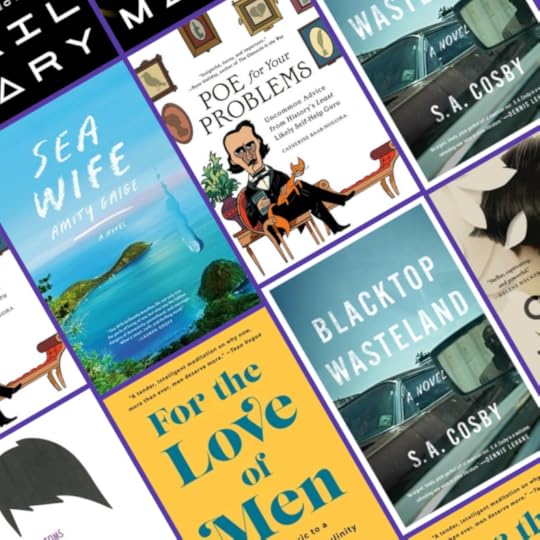
I read 58 books this year. Of those, nine stand out in my mind as being particularly great reads. These are the books that stayed with me, made me think back on them long after I’d finished them. They are the books I’m telling my friends about.
Here they are, in no particular order and with no regard to publication date. The best books I read in 2021. (and by the way… each of the images below links to my affiliate account on Bookshop.org which means that if you buy a book using that link, you support this blog AND indie bookstores – win win!)
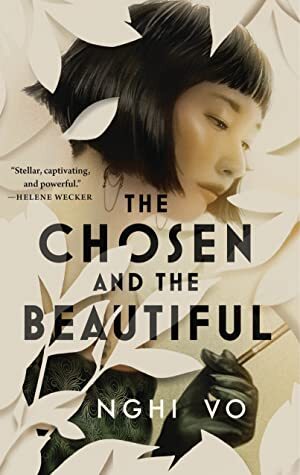
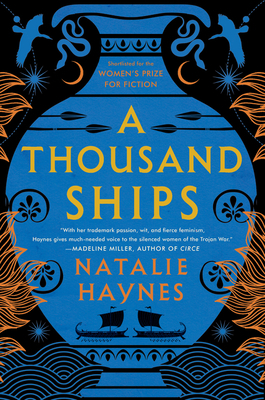
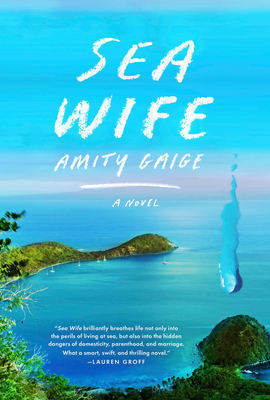
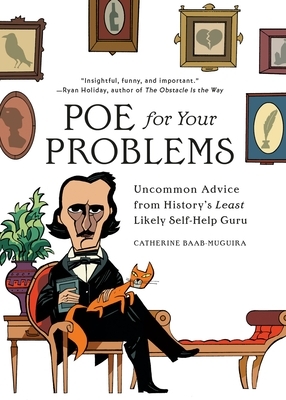
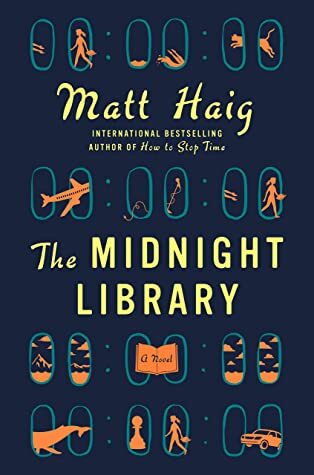
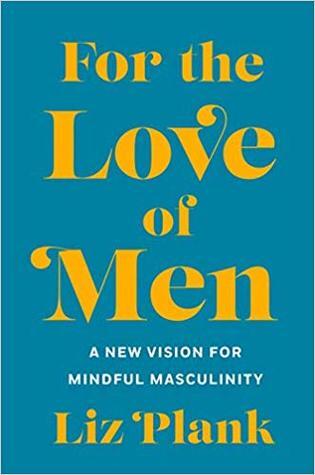
 [image error]
[image error]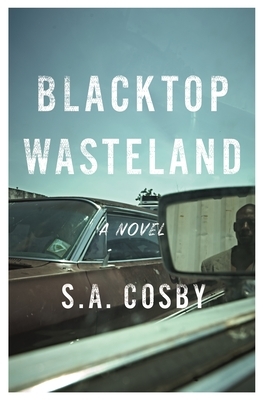
What are the best books you read this year?
December 8, 2021
Last Mile Stuff


My husband and I have a phrase we use to describe the work that you didn’t anticipate on a creative project, the changes you could probably ignore and still have a story that’s “good enough” and you’re so tired of working on it that you’re sorely tempted to just call it done, but it’s not done, so you keep pushing. We call it Last Mile Stuff. (Sometimes “stuff” is replaced with a different “s” word, depending on how frustrated we find ourselves.)
Poetic, I know. I don’t even remember when we started using that phrase. I just googled it to see if it popped up somewhere we might have stolen it from, but I think maybe we invented it (feel free to contradict me in the comments).
In my mind it conjures the image of a long race, maybe even an ultra marathon, and you’ve come so far, and you just want to be done, but there’s one more mile to go. You can’t quit now.
In The Thick Of ItI am deep in the Last Mile Stuff these days. After finishing the last draft in August I was sure I was done, then my husband had an idea for the middle chapter that I loved, so I took some time to figure it out and rewrite. Then I noticed other things that needed changing, and so on. What I’ve realized through the process is that this chapter is a critical turning point for the story. It has to deal with the immediate challenges of the narrative, but it also has to set up everything that’s to come.
So I keep rewriting it, and rewriting it. And once I get this chapter how I want it, I’ll have to go through the rest of the manuscript to polish up some details that will have to change (ripple effects of changing the middle chapter). It’s exhausting. All I want is to be done. I thought I WAS done, months ago, and yet I’m still sitting here working.
Worth The WorkThe main thing I try to keep in mind is that this Last Mile Stuff is when a project goes from “fine” to “good.” Maybe even great. If I had stopped in August, I’m guessing my agent could have probably sold it. It was fine. But it keeps getting better in subtle, resonant ways. Themes are emerging that I didn’t even know were there.
Another thing I try to remind myself is that any deadlines I had in my head were just that: in my head. I had really hoped to have it to my agent before the end of the year, but there’s no way that’s happening. January, maybe. It’s not like I’m that far off, but there are several steps I still want to take:
I like to use Scrivener’s word frequency function to look for weird words I use way too often. Example: in my last book, I noticed I used the word “cock” dozens of times (which might have been okay if I was writing a steamy romance, but in this case, I used it OVER and OVER to describe head movement). I mean, seriously, the amount of times my characters cocked their heads was ridiculous. Then I like to search for weak verbs (looked, sat, walked) and boring descriptions (why use red, when I can use crimson or scarlet or berry?). After that I read it out loud to myself and record it. Nothing fancy, but when I did this with my last book (even after I was sure it was done) I found SO many things that didn’t sound right. Then, ideally, I would stick it in a drawer for a month and then read it again one more time.Will I have the patience for all this Last Mile Stuff? The way I see it, I have no choice. I’ve come too far with this project to half-ass the final details. All I can do is dig in, keep trudging forward, and do the work.
November 24, 2021
A Thanksgiving Poem
 [image error]
[image error]Every year around Thanksgiving, I share a poem here on my blog, something that speaks to me at the start of the holiday season. This year, the poem I’ve chosen is “Where’s the Magic,” by Annis Cassells.
I met Annis at A Very Important Meeting. She’s a dedicated writer, poet and teacher. She came to poetry later in life (publishing her first collection at age 75), but you’d never know it by reading her work. I love this poem for the way she plays with the line breaks, the way the pace lifts so gracefully, and lands with a heartbreaking truth. You can find Annis on Facebook, Goodreads, or Twitter, and learn more on her website.
Happy Thanksgiving!
Where’s the MagicThe magic happens
When children realize
they can let go while standing
The magic happens
When they realize
you’ve let go and they’re riding
The magic happens
When children realize
they recognize a word in print
they can tie their shoes
they get a joke and laugh
In the eyes of their parents
The magic happens
every single day
October 27, 2021
NaNoWriMo for the Win
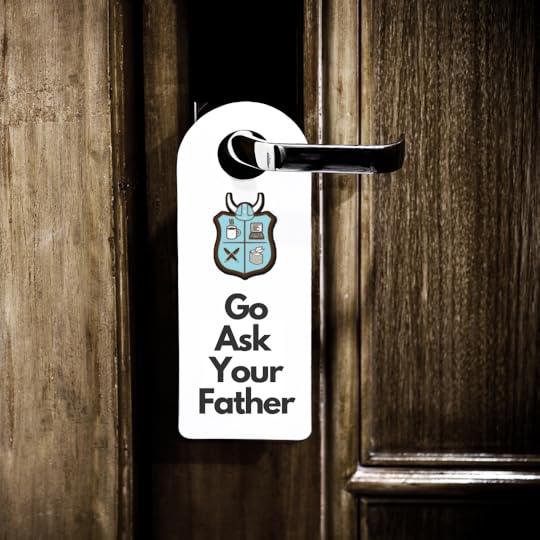

It’s almost that time of year again, when people all over the world attempt to write 50,000 words in one month for the annual National Novel Writing Month (NaNoWriMo) Challenge. Are you doing it? Are you ready?
I’ve done the challenge three times now.
The first time, in 2015, I didn’t “win,” but I still added almost 33,000 words to (what would eventually be) my first novel, 142 Ostriches.
In 2016, after some hemming and hawing, I wrote the first 50,000 words of what will be my second novel. After all that work, I actually put the project aside while I finished up 142 Ostriches, and didn’t come back to it in earnest until 2018.
In 2019, I decided to try something different. I was toying with an idea for Novel 3 and was curious to try writing longhand. I loved it. I wrote all 50,000 words away from my desk, at coffee shops and sandwich shops.
I’m not doing it this year, simply because I’m deep in the final round of edits on my second book. It’s not the right time for me to be focused on word count, but I love the challenge all the same and will be cheering on all the folks out there who are giving it a go.
Why I Love NaNoWriMoThere are two main reasons I love this challenge.
The first is the community that rises up around it every year. There are in person meet-ups, #writingsprints on Twitter (see below for more on #writingsprints), and friends and family cheering you on.
The second is that writing 50,000 words in a month is a challenge that requires us to carve out real time, to make (or re-establish) a serious commitment to our writing.
5 Things I’ve LearnedIf this is your first time doing NaNoWriMo here are a few things I’ve learned:
1. You don’t have to plan ahead. Even if you generally prefer to outline, you can totally jump in with little planning and just use your 1,667 daily words to explore ideas or write backstory. Or you may find that “pantsing it” (NaNoWriMo slang for flying by the seat of your pants) suits you and a story just flows.
2. Scrivener is super useful (but then again, when is it not?) I wrote a post a few years back titled 4 NaNoWriMo Scrivener Tips. Be sure to check that out.
3. You should tell your friends/family/co-workers that you’re doing it. If you haven’t yet told your community that you’re a writer, this is a perfect opportunity, because you can push the focus onto the challenge (thereby deflecting questions about your own writing) and just say it’s something you want to try, just to see if you can do it. Winning at NaNoWriMo in secret is MUCH harder. So be brave, tell the world you’re a writer.

4. Embrace #writingsprints. As the name implies, a writing sprint is when you set the clock for a certain number of minutes and try to write as many words as you can in that time. You can do this on your own of corse, but it’s also fun do on Twitter (thus, the hashtag). Then, after the 15 minutes (or however long) you post how many words you wrote and others can share too.
5. Prepare for Thanksgiving week. This is the week most people get derailed. Consider your plans. Can you write on Thanksgiving, or will you be drinking and baking? Prepare for lost writing time and you can avoid getting discouraged by falling behind.
More…Starting today on my Instagram profile, I’ll be posting daily videos on how to succeed at the NaNoWriMo challenge. I’ll be talking about craft, perseverance, and self care (aka – staying sane while you tackle this awesome challenge).
If you have any questions or topics you’d like to know more about, drop them below or shoot them to me via Instagram and I’ll do my best to address them.
And good luck! May your words flow freely through the wild ups and downs of November…
October 13, 2021
Social(ly Destructive) Media

I was not at all surprised to learn, through the reports of the Facebook whistleblower last week, that the company is consistently focused on profits over people. I quit Facebook in April of 2018 and have missed it NOT AT ALL. In fact, I’m quite sure I’m a happier, less anxious person since quitting.
Resist the FOMOIf you’ve been thinking about taking the leap, the main thing to know is that they make it really fucking hard. If you manage to find the “close my account” link, you’ll be directed to a page telling you how all your friends will miss you. “Do you still want to close your account?” Um, yes. Then you’ll get another page warning you, in super manipulative FOMO language, that you might miss updates and “are you SURE you really want to close your account?” Yes. Do it.
Be strong. Because, seriously, Facebook, and it’s jacked up inability to do anything to staunch the flow of misinformation in the world, is the worst. If you’re worried about losing touch with your friends, try a phone call, or an email, or a text. And never again worry about responding to 200 bullshit “happy birthday” messages from people you would never still be “friends” with if it weren’t for fucking Facebook. Nobody needs 200 “friends.” What we all need are 2 or 3 good IRL friends.
The HypocrisyNow, having ranted and dropped an f-bomb (or two), I have to acknowledge that it’s highly likely you found your way to my website by way of social media. This is a fact that has been plaguing me for a while now. I quit Facebook, but I’m still on Instagram (because I love a good slideshow) and Twitter (because angry people make me giggle), and most of my readers find me through social media.
But I can no longer ignore that Instagram is owned by Facebook. My rational for staying on Instagram has always been that the platform (with it’s lack of easy reposting) doesn’t spread dangerous misinformation in the same way as Facebook, but again, that whistleblower has me questions my criteria for acceptable levels of evil.
Destructive MediaIn case you missed it, here are a few highlights from the whistleblower article:
One Facebook study that found that 13.5% of U.K. teen girls in one survey say their suicidal thoughts became more frequent after starting on Instagram.Another leaked study found 17% of teen girls say their eating disorders got worse after using Instagram.About 32% of teen girls said that when they felt bad about their bodies, Instagram made them feel worseI have a teenage daughter. She’s not on social media, because my husband and I made that a stipulation of her getting a phone, but the fact that so many girls are suffering because of Instagram, and that the company KNEW and didn’t give a shit as long as the money kept rolling in, well, it’s really pissed me off.
What To DoI feel held hostage, just a little. As a writer, I depend on social media to connect with people, to promote my work, and Twitter is, hands down, way better for that. But Instagram feels more intimate. I love the photos people share, particularly the artists in my Los Angeles community. I don’t follow accounts focused on totally ripped bods or anyone who posts photos of their every meal. I like poets, and photos taken on neighborhood walks.
And a little voice inside my head screams: is that so wrong?
I just don’t know anymore. Are you on social media? Are you thinking of quitting? Why or why not? What is the ethical course of action when a service we depend on is so terribly bad for a certain segment of our population? Please chime in. I’m looking for some insight here.



